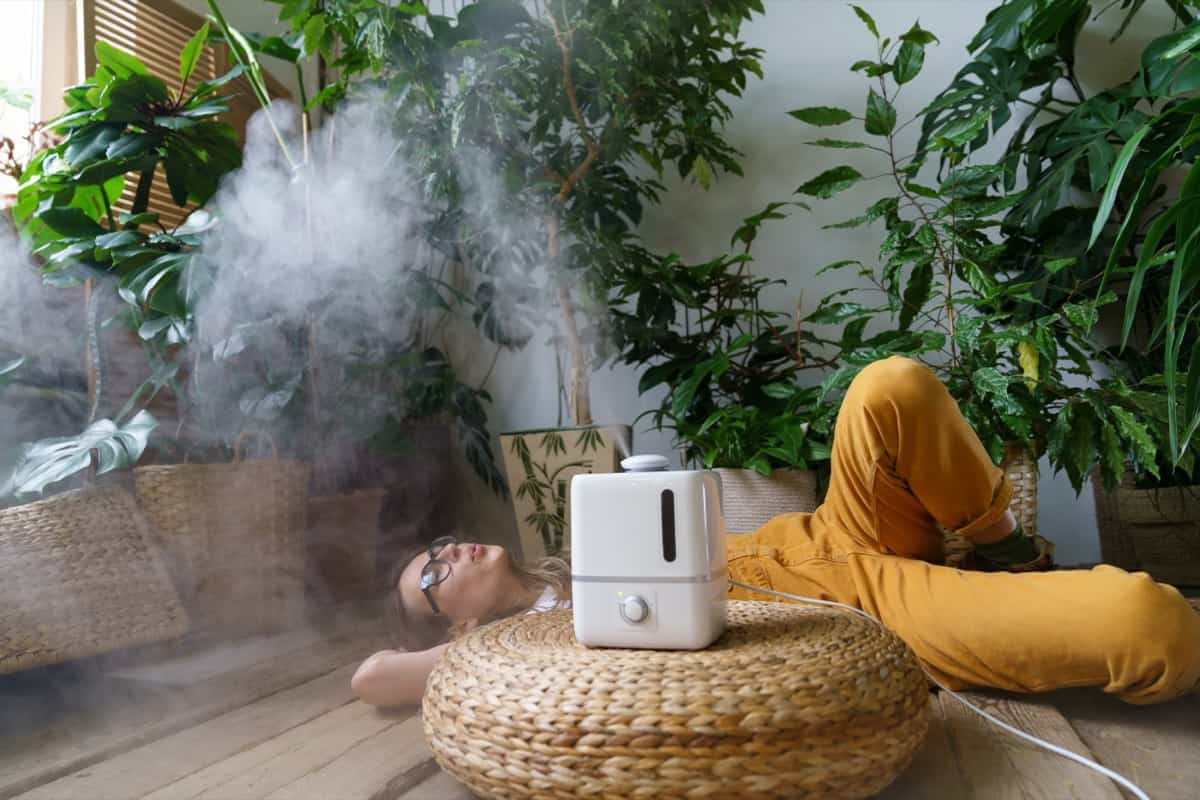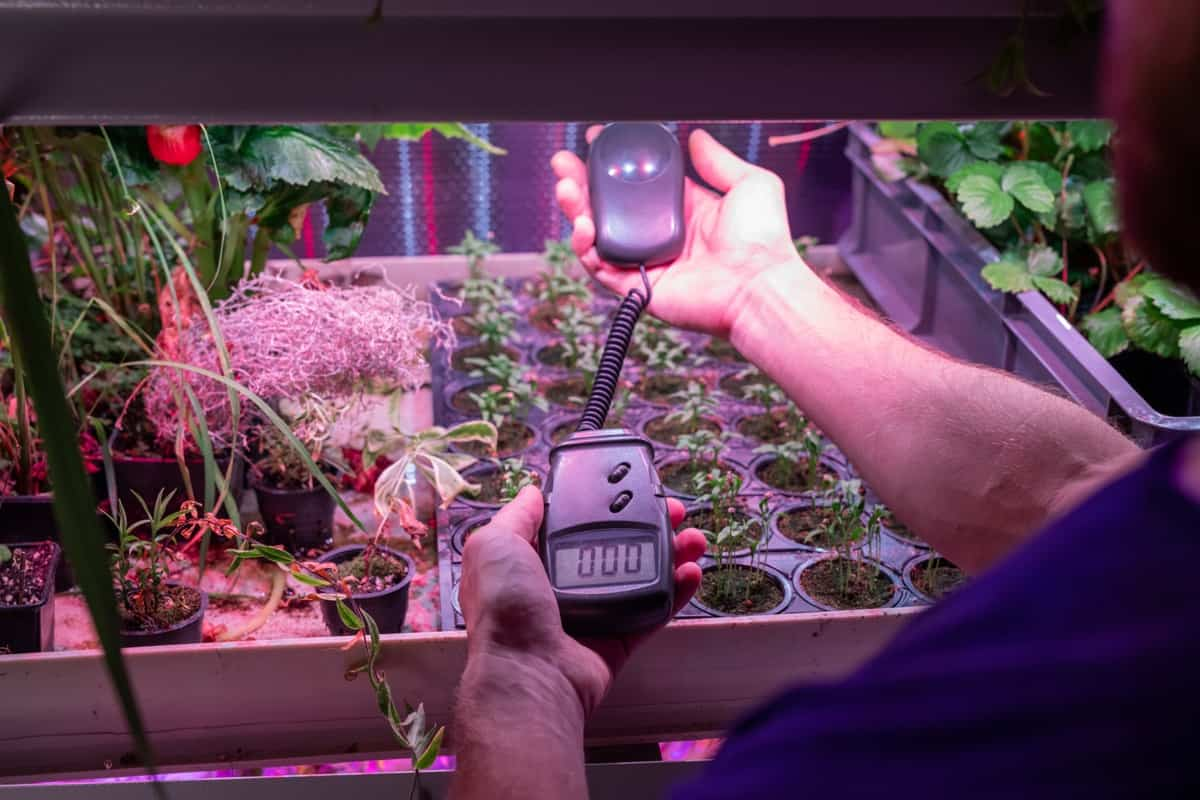Houseplants that grow in tropical climates prefer a higher humidity level than those grown in temperate Mediterranean climates. Alternatively, plants that grow natively in desert environments may require less humidity than the levels in many households. Controlling indoor humidity is essential for maintaining plant health, especially when using artificial heat or air conditioning. Let’s check out how to manage humidity levels for indoor potted plants below.

Why Is Humidity Important for Plants?
Plants can quickly dehydrate if they cannot replace the lost water at the same rate as they are losing it if the humidity is too high. It is essential to maintain ideal humidity levels to keep your plants healthy and alive. The underside of a plant’s leaves contains thousands of tiny pores called stomata. Through these pores, water evaporates, cooling the plant and allowing nutrients to enter.
Low humidity levels in dry conditions cause plants to lose water continuously. In extreme cases of low humidity, plants start shedding their leaves to prevent dehydration from killing them. A plant’s health depends on maintaining ideal humidity levels.
Best Level of Humidity for Plants
A humidity level of 50-60% is ideal for most houseplants. It is most likely that most plants will remain healthy and adapt to these humidity levels if you can achieve them. Most houseplants flourish best in humid climates, while a few do better in arid climates.
Signs Your Potted Plants Need Humidity
It is natural for plants to thrive in highly humid environments, but when they are placed in a dry home environment, they show signs of stress. The following five symptoms indicate that your potted plants need more humidity:
- Brown Edges & Crispy Leaves: If the humidity level drops below 50, your plant’s leaves will begin to crisp up and will turn brown at the edges in dry conditions. Low humidity is the biggest culprit, but harsh sunlight can also be blamed. Plants transpire through their leaves, and arid conditions cause leaves to suffer the most because they are subjected to the highest transpiration rate.
- Dull-Looking Leaves: When plants constantly lose water through their leaves, you will notice an unhealthy appearance. Due to their high evaporation rate, they will appear dull and lose their shine.
- Stunted Growth: Stunted growth results from plants being unable to photosynthesize/make food in dry conditions. In this situation, plants are limited in nutrients, so they prefer survival instead of growing.
- Wilting: It is not only dehydration that causes plants to wilt, but low humidity produces similar symptoms. Drooping leaves and brown stems are signs of a dry environment. Plants can suffer permanent damage if humidity levels are not raised promptly.
- Yellow Leaves: Various factors, including insufficient nutrients, harsh sunlight, or a lack of water, can cause a yellow leaf. If you notice many leaves yellowing, a dry home environment is responsible for the low humidity.
How to Manage Humidity Levels for Indoor Potted Plants
Humidity Tray for Plants
A humidity tray for plants is a popular way to increase moisture levels. The water in the water tray evaporates, causing humidity levels to rise. You can use a ceramic or clay tray a few inches bigger than the pot. Put rocks and pebbles in it first. In the next step, fill half the tray with water and place the planters on the pebbles. Ensure the stones are big enough to prevent plants from touching the water. If you leave the pot bottom wet, it will eventually lead to root rot.
Mist to Increase Humidity for Plants
You can raise the moisture level of your plants by misting them. The dewy moisture layer on your high-humidity plants will delight them. By spraying your plants, you increase their moisture level but do not add to the overall humidity level. Furthermore, this method won’t significantly increase humidity levels. Thus, depending on the dryness in your area, you may need to mist several times during the day.
In case you missed it: Tips for Making Plants Bushy Indoors

Get a Humidifier
A humidifier is the perfect solution for increasing humidity for plants. It raises the moisture content of the air by releasing water vapor or steam. Plants that thrive in high humidity can benefit by maintaining optimal humidity levels. Humidifiers can be operated throughout the day or at certain times, depending on the external climate conditions. If you purchase a humidifier for plants, choose one with a long run time so you don’t have to keep refilling the water.
Place Your Plants in Humid Areas
Another way to boost humidity is to place your plants in highly humid areas, such as the kitchen, bathroom, and laundry room. High-humidity plants benefit significantly from the wet environment of showers, bathtubs, and sinks. Furthermore, steam from cooking food can also be used for this purpose. Plants like Peace Lily, Fern, Indoor Palm, and English Isvies should be moved to these areas, especially during the winter when humidity levels are low.
Opt for a Two Pot Method
A two-pot method boosts humidity levels for your plants in a unique way. Putting your regular houseplant pots into a larger pot 1-2 inches wide and taller is a good idea. The bigger pot needs to be filled with sphagnum moss and sprayed with water. Moss can also be used to cover the soil in the original pot. Moisture is held in sphagnum moss, and soil cannot dry out quickly. Sphagnum moss evaporates water, increasing the humidity level of the plant. When using this technique, both pots have drainage holes to prevent root rot and fungus growth.
Cover Your Plants With a Plastic Bag
The method may seem dangerous but can only cause harm if performed incorrectly. The technique can be used when other options aren’t available. You can cover humidity-loving plants with a simple plastic bag. Ensure this plastic bag does not touch the leaves directly. Plastic can be kept away from foliage with wooden stakes. If condensation forms inside the plastic bag, open it occasionally and check for it. Also, never put plants covered in plastic in direct sunlight since it can get hot inside this greenhouse-like setting and burn the leaves.
Group Your Plants
Create a humid microclimate by grouping high-humidity plants. When many plants are grouped, they release moisture through transpiration, increasing humidity levels. By way of a vascular system, roots absorb water, which is then taken up by stems and leaves. The water reaches the leaves, evaporates, and raises the indoor humidity. Grouping plants with similar humidity requirements is the key here. Because English Ivy plants transpire rapidly, grouping them will increase humidity significantly.
In case you missed it: The Best Fertilizer for Indoor Plants: When and How to Apply

Conclusion
Indoor plants have so many options for increasing humidity. A moderate humidity level is more comfortable for you than a low humidity level, so it’s beneficial to your houseplants and houseplants. Using a humidifier or humidity tray will increase humidity for your houseplants if you group them, mist them, or group them when they are dry. Placing your plants in a bathroom, terrarium, or indoor greenhouse can also be beneficial.
- Ultimate Guide to Ossabaw Island Hog: Breeding, Raising, Diet, and Care
- Ultimate Guide to Juliana Pig: Raising Facts, Size, Diet, Care, and Lifespan
- Raising Lleyn Sheep: Disadvantages, Price, Uses, Characteristics, and Care
- Ultimate Guide to Meishan Pig: Breed Facts, Breeding, Raising, and Care
- Ultimate Guide to Teacup Pigs: Raising, Diet, Lifespan, Cost, and Care
- Guide to Raising Poll Dorset Sheep: Facts, Profile, Characteristics, Uses, and Care
- Ultimate Guide to Bighorn Sheep: Characteristics, Diet, Lifespan, Breeding, and Lifecycle
- Ultimate Guide to Raising Katahdin Sheep: Farming Facts, Breed Profile, Uses, and Care
- Ultimate Guide to Raising Oreo Cows: Belted Galloways Farming Facts, Profile, Uses, and Care